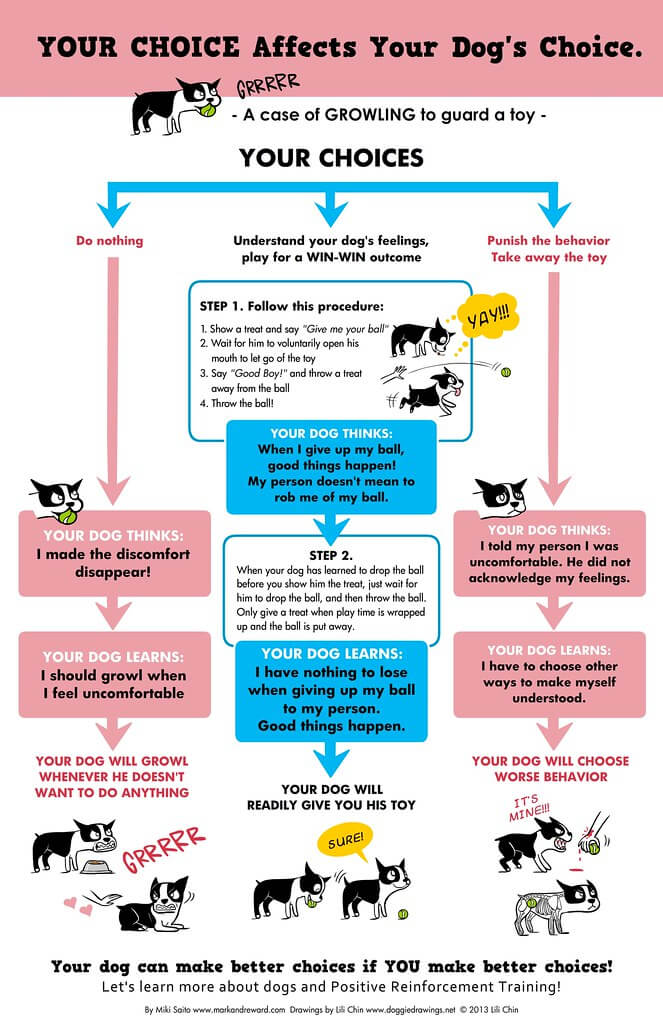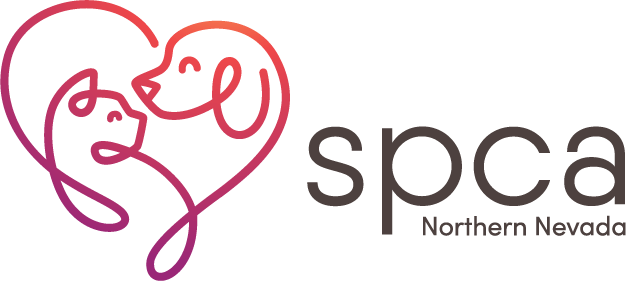Resource Guarding
Resource guarding is a genetically retained ancestral trait which helps wolves survive. After a kill, each wolf family member pulls off their piece of the meal and covets it from their social partners to ensure they receive enough fuel. While selective breeding in dogs has largely eliminated predatory instincts to hunt and kill prey for food, some dogs retain resource guarding from their wild ancestors. It is exhibited when the dog has something of value and decides to protect it by using threatening body language. This may include a stiffened body, a hardened face and glaring stare, whale eye or wide eyes, lifting lips and teeth baring, and low growling or snarling. All occur while the dog has a possession. In many cases, resource guarding is manageable.
There is no guarantee that your dog will ever stop resource guarding. It is important to be aware of your pet’s body language and emotions at all times.
Causes of Resource Guarding
- Genetic retention of wild trait
- Lack of resources in environment
- Stress, including but not limited to (1) being in an unknown or new environment; (2) being around unfamiliar dogs or people

What to Do
Resource guarding that manifests during stress may not be expressed when the dog is not stressed. Other types of resource guarding are more genetically based and cannot be eliminated entirely. A well-managed dog may decrease intensity over time.
Puppy-proof your house
Puppy-proofing isn’t just for puppies! A well-managed environment is key to avoiding any unwanted behavior, no matter the dog’s age.
- Identify items that may elicit this guarding response and keep them out of reach.
- Trash cans – keep covered or locked in a cupboard or pantry
- Counter tops – keep clear of desirable items such as food, wrappers, prescriptions, dirty dishes, etc.
- Baby gates – use baby gates where necessary to keep pets out of restricted areas that are not easy to dog proof.
Trade-up an teach drop it
- Always trade-up when you need to retrieve something from your dog. If he is guarding an item, bring a few extra-tasty treats to toss to the side so he drops the item to eat the treats. This creates an association with your dog that you are not there to take things away from him, but to bring him extra good things.
- Teach your dog to “Drop It” on cue.
- Practice with toys your dog does not guard. Engage your dog in a game of tug or fetch. When he’s holding the toy in his mouth, put a treat up to his nose. When he smells the treat, he should let go of the toy. As soon as he does, tell him “Drop It” and give him the treat.
- Practice with lots of items, slowly progressing to higher value items until he learns “Drop It” on cue.
Manage the triggers
- It is imperative to prevent the dog from ever triggering to guarding.
- If your dog guards in specific situations, you can then manage those situations, such as confining your dog when giving him a bone, or feeding him and then not disturbing him until the resource is gone.
- If your dog is showing resource aggression towards other dogs, this is a normal behavior and is best managed. Separate the dogs at feeding time or when giving treats/bones/toys; otherwise, avoid giving out these items if that is not possible.
- Dogs often learn about each other’s boundaries by trial. Some dogs decrease resource guarding behaviors over time with each other after learning when to avoid one another. Some dogs like to challenge other dogs repeatedly and don’t learn mutual respect which can be dangerous if not managed well.
- If your dog is triggered to guard by children, confine the dog when children are around and/or be sure not to give the dog any high value items. Teach the children to respect the dog by not approaching or taking items from the dog.
When to Get Help
What Not to Do
- Never take anything away from any dog by overpowering them. Always trade. It’s the easiest way to establish good habits for both human and dog from the beginning of the relationship.
- Do not punish your dog for guarding during or after the incident. Dogs do not understand this kind of punishment and see it as a challenge which can lead to increased aggression.
- Do not “dominate” your dog. Many people think that if you show your dog that you are stronger and able to roll him over or take away his food, it will stop the resource guarding. This is not the case and it could result in more stress for your dog and a potential bite for you.
When to Get Help
- Because guarding can be scary and potentially dangerous, and because behavior problems can increase if managed incorrectly, you may want to get professional, in-home help from an animal behavior specialist.
- All SPCA of Northern Nevada Alumni receive 15% off training services through Canine Rehabilitation Center and Sanctuary.
Need a printable version of this page to hang on your fridge? Click on the button below!
Like what you read? Please consider making a gift to support the SPCA of Northern Nevada!

